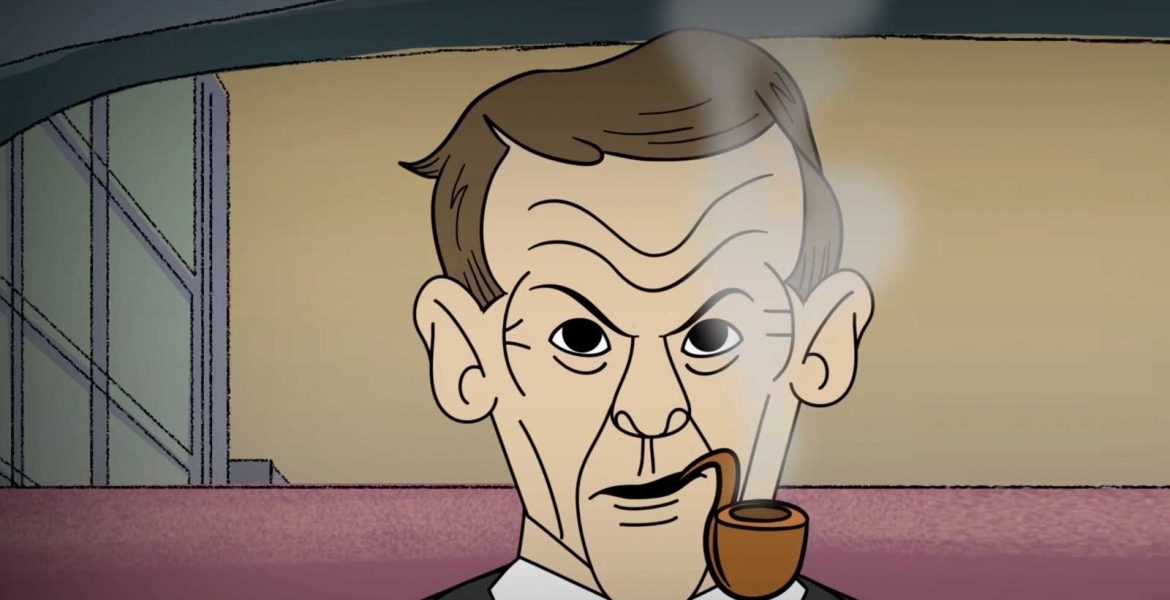David Ogilvy was renowned for his ability to craft captivating copy that didn’t’ just look and sound good – but that sold products too. Which were his most famous pieces of work and how did they contribute to his meteoric rise to success? We’ve compiled some of our favourites. Starting with his personal favourite, for Rolls Royce.
Rolls-Royce (1958)
Imagine this scenario: It’s 1958, Americans have been living in a prosperous post-war era for years, and the automobile is the ultimate rolling status symbol. The folks at Rolls-Royce approach Ogilvy to help promote a car that is the very symbol of luxury. The ad man knew the upper-class notoriously longed for peace and quiet. Not least in their homes, but from the noisy engines in the majority of cars at the time. So, after reading about the car for three weeks he came across a write up from the Technical Editor of The Motor, and from that, he had his headline: “At 60 miles an hour the loudest noise in this new Rolls-Royce comes from the electric clock”. Following it was 607 words of factual copy to make the close. Astonishingly it ran in just two newspapers and two magazines. The year after, Ford based a multi-million-dollar campaign on how their cars were quieter than the Rolls-Royce. Imitation is the highest form of flattery.
 The Man in the Hathaway Shirt (1951)
The Man in the Hathaway Shirt (1951)
When a client of yours has a budget markedly less than the competition yet still wants to smash it out of the park, there’s no choice but to get seriously creative. That’s exactly what Ogilvy did when he stopped at a chemist on route to a shoot for a little-known shirt maker, CF Hathaway, from Maine.
“We’ll never be your biggest account,” said its president, Ellerton Jette, “but we won’t change any of your copy either.” Having toyed with using an eyepatch – never seriously – he picked up a few for 50 cents. On arrival, he asked the photographer to shoot a few with them on. Merely to humour him.
“Then you can go back to doing a serious job,” he said. The impact of the ad was stark and immediate. Every Hathaway shirt in New York was sold.
 Schweppes and Commander Whitehead (1953)
Schweppes and Commander Whitehead (1953)
A recurring theme here, Schweppes had what Ogilvy describes as a “peppercorn” budget. At the time they were trying to break into the American market. Ogilvy managed to convince the president of Schweppes himself, a World War II veteran whose name was Commander Edward Whitehead, to be in the commercial himself. Ogilvy was going to use actors but decided against it in favour of Whitehead. There was something about the British accent and the beard that Ogilvy felt would appeal to the market, and famously told him “people are more interested in individual personalities than in corporations.” It worked. By 1958 Schweppes was selling 30 million bottles of the stuff every year.
 The Guinness Guide to Oysters (1950)
The Guinness Guide to Oysters (1950)
The final piece of work is, once again, crafted around long-copy. The Guinness Guide to Oysters was released in 1950 and was one of Ogilvy’s earliest works. Many argue it’s not much to look at, and we’re inclined to agree. Though take a closer look and read the headline.
“Oyster Bays are mild and heavy-shelled. It is said that oysters yawn at night. Monkeys know this and arm themselves with small stones. They watch for an oyster to yawn and then pop the stone in between the shells. ‘Thus the oyster is exposed to the greed of the monkeys.’”
Ogilvy worked his magic to imbue a lifelike quality to the ads as a piece of art, whilst simultaneously doing the same for the product he was selling too. Inform, compel and delight. Even if he was selling oysters. Ah, Ogilvy. You genius.

Craftsmen of Creativity: Tales of a Creative Revolution pays tribute to the brave men and women whose form of creative activism led to profound change throughout the industry.
Through a series of animated shorts, you’ll see the stories from their careers unfold, and the adversity they overcame on the road to legendary status.

